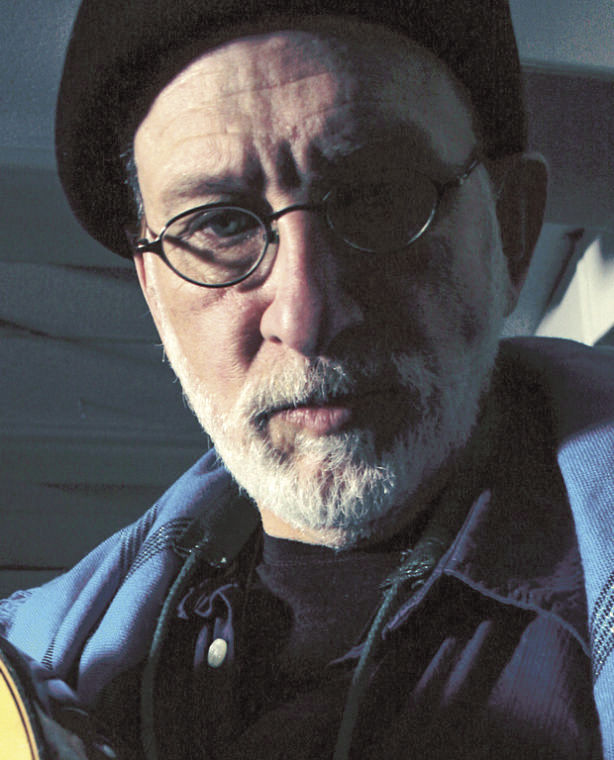Rabbi James Stone Goodman: Justice and righteousness meet myth and rationality
Published August 12, 2021
Justice is elusive. We learn this from this week’s Torah portion, the famous tzedek tzedek — justice reiterated and pursued (Deuteronomy 16:20) — a reminder that justice, true justice, transformative justice, necessary justice, requires us to go to any lengths. And when the institutions are working, so to speak, it’s a beautiful thing.
The poet Rashi reminds us that justice is our job, we don’t leave it to the professionals. It’s the preoccupation of all of us and, when it’s right, it’s beautiful. It’s not theoretical.
Our Big Book Torah reminds us that everyone is implicated in the mechanism of justice. We are not the kind who wait for the inexorable gears to creak out some abstract consequence. We create consequence.
ADVERTISEMENT
Dig this crazy mitzvah from later in this week’s portion of our Big Book:
“If in the land someone slain is found lying in the open, the identity of the slayer not being known, your elders and judges shall go out and measure the distances from the corpse to the nearby towns.
“The elders of the nearest town shall take a calf which has never been worked, bring it down to a rugged wadi which is neither plowed nor sown. There, in the wadi, they shall break the calf’s neck.
“The priests, the sons of Levi, shall come forward, then all the elders of the town nearest the corpse shall wash their hands over the calf whose neck has been broken and say, ‘Our hands did not shed this blood, neither have our eyes seen it. Forgive, O God, your people Israel, whom you have redeemed and do not let guilt for the blood of the innocent remain among your people Israel.” [Deut. 21:2-8]
ADVERTISEMENT
What kind of cockamamie confession is this? Rashi, the poet quoting the Talmud, asked: Who would imagine the elders and priests had anything to do with it?
The point is that everyone is responsible. Repeat: We are all responsible, thus Abraham Joshua Heschel’s pericope that some are guilty but all are responsible. A life has been taken, and the whole community is somehow implicated. Take a closer look at the culture. It’s the culture (stupid). Don’t we know this?

My Spanish friends Nachmanides and Ibn Ezra read this as some sort of mystery ritual, but from Maimonides we have a different kind of mystery, we have a detective story. Maybe it’s a strategy to solve a murder, suggests Maimonides (Guide 3:40). The murderer probably lives nearby. Stir up the story, the more likely someone nearby will play out their part. There are a hundred excellent English mystery stories written around this principle.
One more thing. Right after articulating the high bar of justice at the beginning of the portion, where do we go? To the Asherah pole, or any tree; do not plant that tree near the altar of God (Deuteronomy 16:21).
What’s an Asherah? Archaeology helps here. Asherah is both a Canaanite goddess and some sort of cultish tree or wooden object. There seems to be some connection between Asherah and the sea. Also, Asherah is often depicted as the consort of El, a masculine name for God. Asherah might be considered in some circles as the bride of God or a goddess. (See Judith M. Hadley’s “The Cult of Asherah in Ancient Israel and Judah: Evidence for a Hebrew Goddess.”)
In the Hebrew Bible, Asherah is also connected with the worship of Baal and sometimes seems to be used as a synonym for “goddess.”
Perhaps that is the source of the prohibition of Asherah near the Altar of YHWH, the holy four lettered name for God in our Big Book. Might Asherah be a vestige of the relationship between YHWH and his consort, his bride, the goddess, the companion of the Holy One, and might this prohibition be an attempt to keep the worship of YHWH free of that kind of thing?
Some of our ancestors liked to keep our mythos and our rationality separate, except of course on Friday night, when the Holy Blessed One and Shekhinah marry and we sing to them their accompanying wedding song, Lecha Dodi. Think of that the next time you are politely standing up and sitting down to sing to the Bride the Queen the Shekhinah as she meets her lover.
Righteousness, righteousness followed by the bride of God, please do not plant a goddess tree near the altar of God. Bride of God reunited with her consort; justice and myth, King and Consort, goddess and beloved, Queen and her lover reunited.
It happens every Friday night. It feels good, this symmetry of return; something separated long ago, nowadays they are (kiss kiss) marrying.
Rabbi James Stone Goodman serves Central Reform Congregation and is a past president of the St. Louis Rabbinical and Cantorial Association, which coordinates the d’var Torah for the Jewish Light.














